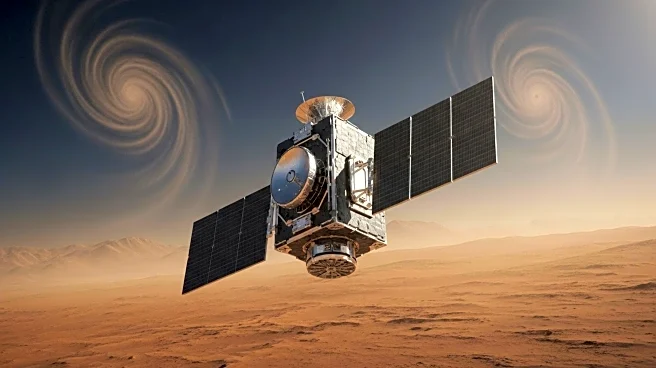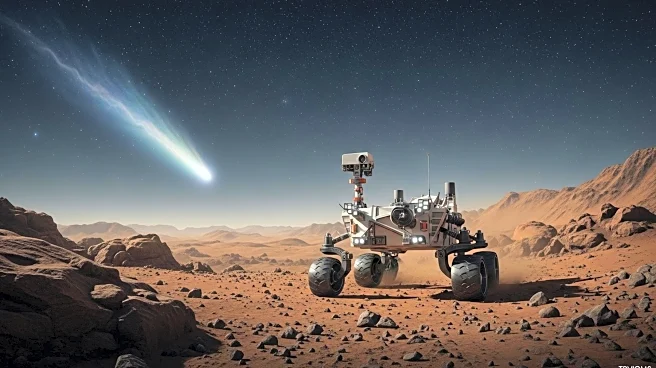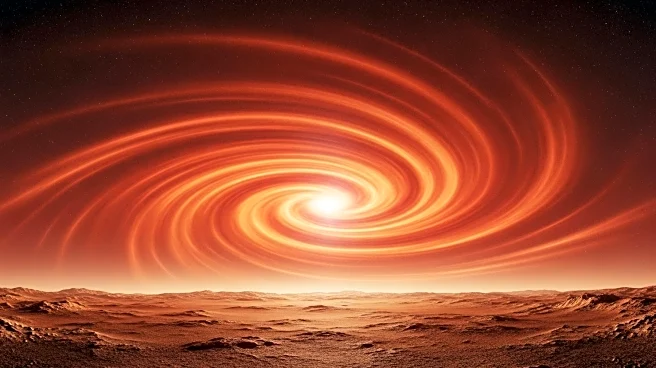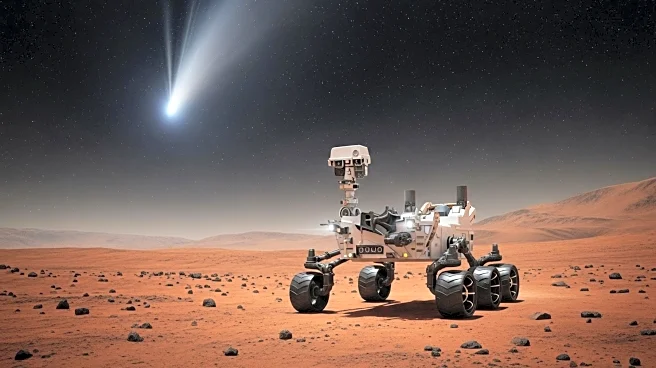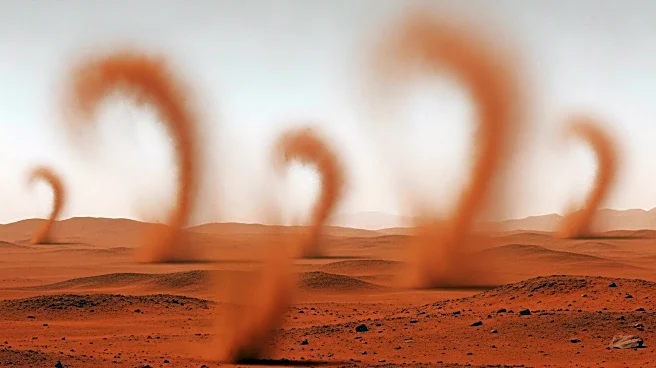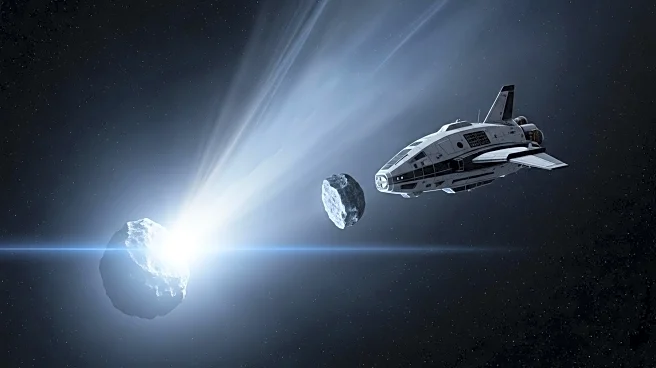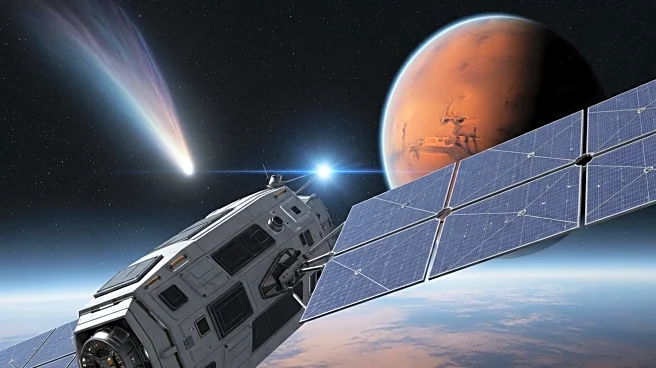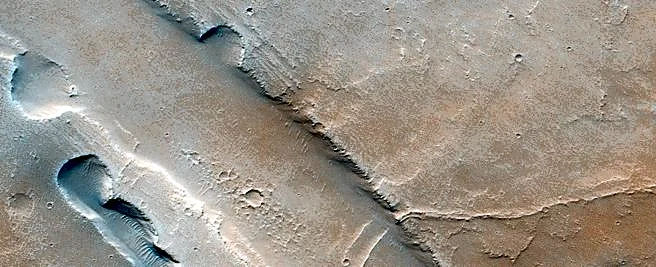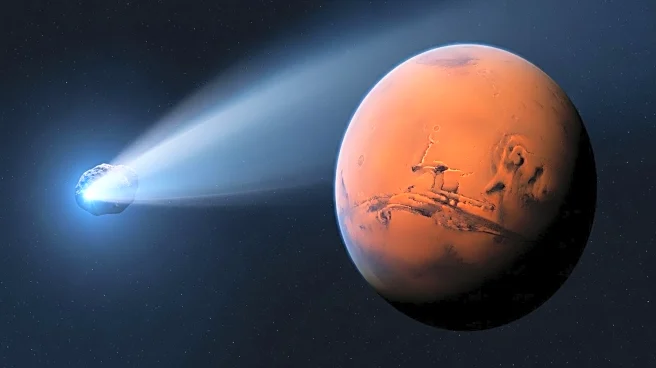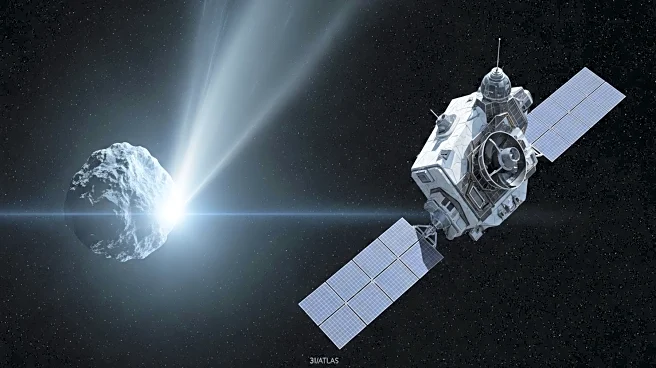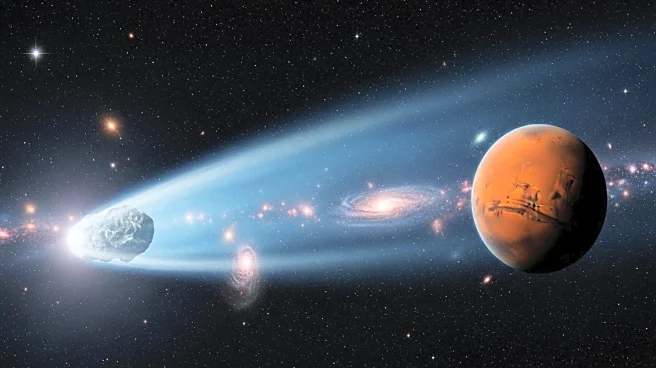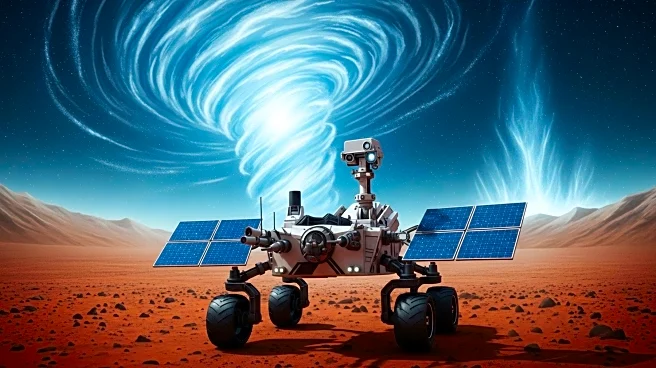What is the story about?
What's Happening?
A new study has mapped over 1,000 dust devils on Mars using data from the European Space Agency's Mars Express and ExoMars Trace Gas Orbiter. These findings, published in Science Advances, reveal that the dust devils can reach speeds of up to 98 mph, much faster than previously thought. The research utilized a unique method of analyzing color offsets in images, which were initially considered digital noise. This method allowed scientists to track the speed and direction of the dust devils, providing a comprehensive view of Martian wind patterns.
Why It's Important?
Understanding Martian dust devils is vital for future missions to Mars, as dust can significantly impact equipment and mission success. The new data will help scientists predict dust accumulation on solar panels and other equipment, improving mission planning and safety. This research also enhances our understanding of Mars' climate, which is crucial for developing accurate weather models and preparing for human exploration.
What's Next?
The findings will be used to refine climate models and improve weather forecasts on Mars. This information is expected to aid in the planning of future missions, including the ExoMars Rosalind Franklin rover, by providing detailed insights into wind conditions at potential landing sites. The dataset is publicly available, allowing for further research and collaboration.
Beyond the Headlines
This study demonstrates the potential of re-evaluating existing data with innovative approaches, turning what was once considered noise into valuable scientific information. This methodology could be applied to other areas of space exploration, highlighting the importance of creative problem-solving in scientific research.
AI Generated Content
Do you find this article useful?
